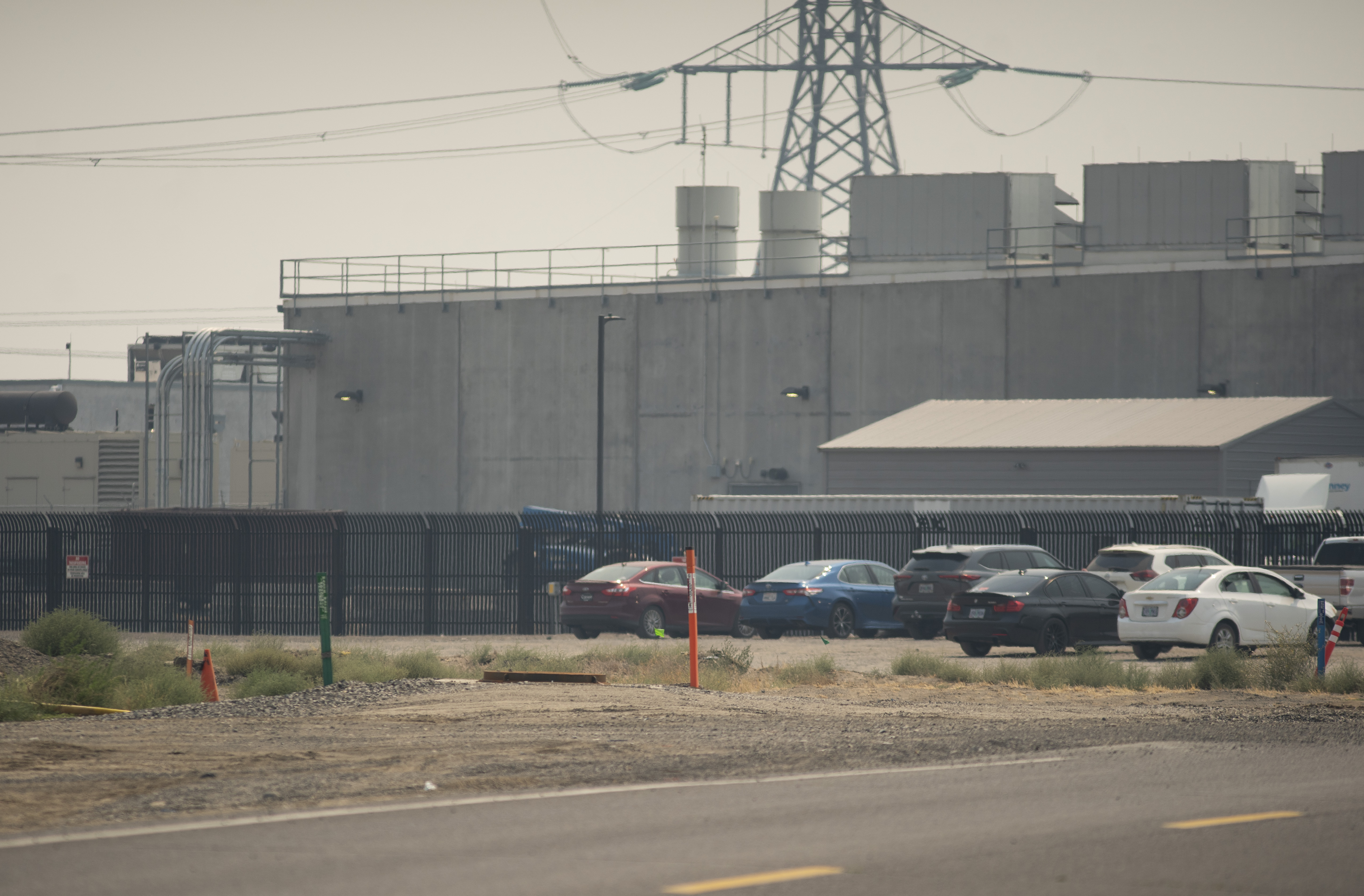Report on Hazardous Waste Disposal Incident in Struthers, Ohio, and its Implications for Sustainable Development Goals
1.0 Executive Summary
An individual in Struthers, Ohio, has been indicted on charges of illegal hazardous waste disposal and water pollution. The case involves the alleged dumping of gasoline into a public storm drain, an act that directly contravenes several United Nations Sustainable Development Goals (SDGs). This report details the incident, analyzes its environmental and social impacts, and frames the event within the context of global sustainability targets, particularly those concerning clean water, health, responsible production, and aquatic ecosystems.
2.0 Incident Details and Legal Proceedings
Ron Singh of Struthers, Ohio, faces indictment following an incident on January 6, where he allegedly disposed of gasoline, which had leaked from a pump, into a municipal storm drain. The Ohio Environmental Protection Agency (EPA) investigated the matter, leading to the charges.
- Charges Filed: Illegal storage, treatment, or disposal of hazardous waste; and water pollution.
- Legal Framework: Under Ohio law, violations of water pollution statutes can result in penalties of up to $10,000 per day of violation. This legal action underscores the role of strong institutions in upholding environmental law, a key component of SDG 16 (Peace, Justice and Strong Institutions).
- Case Status: Despite initial cooperation with the Ohio EPA investigation, the accused failed to appear for a subsequent court hearing.
3.0 Environmental and Health Impacts vs. Sustainable Development Goals
The improper disposal of gasoline into storm drainage systems poses severe threats to environmental integrity and public health, undermining progress toward critical SDGs.
3.1 Violation of SDG 6: Clean Water and Sanitation
Municipal storm drains often discharge directly into local rivers and lakes without treatment. The introduction of gasoline, a hazardous chemical, directly pollutes these water bodies.
- Contaminates potential sources of community water.
- Degrades water quality, making it unsafe for recreational use or as a habitat.
- Requires costly and resource-intensive remediation efforts to remove pollutants.
3.2 Violation of SDG 14: Life Below Water
Aquatic ecosystems are acutely vulnerable to chemical pollution from petroleum products.
- Gasoline is toxic and can be fatal to fish, invertebrates, and aquatic plants.
- Oil and chemical spills cause long-term ecological damage, disrupting food webs and habitats.
3.3 Violation of SDG 3: Good Health and Well-being
Water and soil contamination from such incidents presents a direct risk to human health.
- Polluted waterways can contaminate fish consumed by local populations.
- Exposure to volatile organic compounds from spilled gasoline can cause physical symptoms, including headaches and dizziness, as evidenced by similar pollution events.
4.0 Responsible Management and SDG 12
This incident highlights a failure to adhere to principles of SDG 12 (Responsible Consumption and Production), which calls for the environmentally sound management of chemicals and wastes.
4.1 Recommended Disposal Protocols
Proper management of hazardous materials like gasoline is essential for protecting communities and ecosystems. Accepted disposal methods include:
- Approved hazardous material disposal centers.
- Official recycling facilities.
- Authorized auto mechanic shops or local fire departments equipped for hazardous waste management.
5.0 Conclusion
The alleged actions of dumping gasoline into a public storm drain represent a significant breach of environmental regulations and a direct setback to achieving key Sustainable Development Goals. The case illustrates the critical need for robust enforcement of environmental laws (SDG 16), responsible hazardous waste management (SDG 12), and widespread awareness of the interconnectedness of human actions with water quality (SDG 6), public health (SDG 3), and ecosystem viability (SDG 14). Ensuring accountability in such cases is vital for fostering sustainable and resilient communities.
SDGs Addressed in the Article
-
SDG 6: Clean Water and Sanitation
- The article’s central theme is the pollution of water systems. The act of “dumping it down a public storm drain” directly contaminates water infrastructure. It explains that many storm drains “drain directly into waterways nearby, unfiltered and untreated,” which compromises water quality.
-
SDG 11: Sustainable Cities and Communities
- The incident occurred in Struthers, Ohio, highlighting an urban environmental issue. The article discusses the improper management of hazardous waste within a community and the resulting negative impacts, such as posing “serious consequences to… the health of the community.” This relates to reducing the adverse environmental impact of cities.
-
SDG 12: Responsible Consumption and Production
- The article focuses on the “illegal storage, treatment or disposal of hazardous waste.” It explicitly addresses the improper disposal of gasoline, a chemical waste product, and contrasts it with proper methods, such as using “approved facilities, such as recycling centers, hazardous material disposal centers, or even local fire departments.”
-
SDG 14: Life Below Water
- The article details the direct harm to aquatic ecosystems resulting from the pollution. It states that “Gasoline can be fatal to fish and plants in and around bodies of water” and that chemical spills “pollute waterways and pose serious consequences to local ecosystems.”
-
SDG 15: Life on Land
- Although the primary focus is on water, the article connects this type of pollution to terrestrial ecosystems. It cites a similar incident in Colorado that “caused soil toxicity levels to spike,” demonstrating the risk to land-based environments.
-
SDG 3: Good Health and Well-being
- The health risks to humans are clearly mentioned. The article notes that such pollution poses consequences to “the health of the community” and references a case where locals experienced “physical symptoms such as dizziness and headaches” from exposure.
-
SDG 16: Peace, Justice and Strong Institutions
- The article highlights the role of legal and environmental institutions. The man was “indicted on charges,” an “Ohio EPA investigation” was conducted, and the specific “Ohio law” with penalties for water pollution is cited. This demonstrates the enforcement of environmental regulations.
Specific Targets Identified
-
Target 6.3
- “By 2030, improve water quality by reducing pollution, eliminating dumping and minimizing release of hazardous chemicals and materials…”
- The article directly describes a case of “dumping” a “hazardous waste” (gasoline) which leads to “water pollution,” making this target highly relevant.
-
Target 11.6
- “By 2030, reduce the adverse per capita environmental impact of cities, including by paying special attention to air quality and municipal and other waste management.”
- The incident is a clear example of failed municipal waste management in a city (Struthers, Ohio), leading to a significant adverse environmental impact.
-
Target 12.4
- “By 2020, achieve the environmentally sound management of chemicals and all wastes throughout their life cycle… and significantly reduce their release to… water and soil in order to minimize their adverse impacts on human health and the environment.”
- The article’s core issue is the failure to manage gasoline (a chemical waste) in an environmentally sound way, resulting in its release into water and causing adverse impacts.
-
Target 14.1
- “By 2025, prevent and significantly reduce marine pollution of all kinds, in particular from land-based activities…”
- Dumping gasoline into a storm drain is a “land-based activity” that directly causes pollution in waterways that can lead to larger bodies of water.
-
Target 3.9
- “By 2030, substantially reduce the number of deaths and illnesses from hazardous chemicals and air, water and soil pollution and contamination.”
- The article supports this by mentioning that pollution from a similar leak resulted in “physical symptoms such as dizziness and headaches for locals.”
Indicators for Measuring Progress
-
Incidents of Illegal Dumping
- The central event—the alleged dumping of gasoline into a storm drain—serves as a qualitative indicator of non-compliance with environmental regulations and a failure to meet pollution reduction targets.
-
Legal and Institutional Actions
- The article mentions several process indicators: the “indictment” of the individual, the “Ohio EPA investigation,” and the existence of a specific law (“Ohio law, the penalty for violating water pollution laws is ‘not more than $10,000 per day of violation'”). These actions indicate an institutional response to pollution.
-
Reported Health Effects
- The mention of “dizziness and headaches for locals exposed to the pollution” in a similar case is a direct indicator of the health impacts of chemical contamination, relevant to Target 3.9.
-
Ecological Damage
- The statement that “Gasoline can be fatal to fish and plants” and that a similar leak “caused soil toxicity levels to spike” are indicators of the adverse impact on biodiversity and ecosystem health.
Summary of SDGs, Targets, and Indicators
| SDGs | Targets | Indicators |
|---|---|---|
| SDG 6: Clean Water and Sanitation | Target 6.3: Improve water quality by reducing pollution and eliminating dumping of hazardous materials. | The specific incident of dumping gasoline into a public storm drain. |
| SDG 11: Sustainable Cities and Communities | Target 11.6: Reduce the adverse per capita environmental impact of cities, focusing on waste management. | An instance of improper hazardous waste management within a city (Struthers, Ohio). |
| SDG 12: Responsible Consumption and Production | Target 12.4: Achieve environmentally sound management of chemicals and wastes to reduce their release to water and soil. | The act of improperly disposing of gasoline instead of using an approved facility. |
| SDG 14: Life Below Water | Target 14.1: Prevent and reduce marine pollution from land-based activities. | The statement that gasoline is “fatal to fish and plants in and around bodies of water.” |
| SDG 15: Life on Land | Target 15.1: Ensure the conservation and sustainable use of terrestrial and inland freshwater ecosystems. | Mention of a similar leak causing “soil toxicity levels to spike.” |
| SDG 3: Good Health and Well-being | Target 3.9: Substantially reduce illnesses from hazardous chemicals and water/soil pollution. | Reported “physical symptoms such as dizziness and headaches for locals exposed to the pollution.” |
| SDG 16: Peace, Justice and Strong Institutions | Target 16.3: Promote the rule of law and ensure equal access to justice. | The indictment of the individual, the Ohio EPA investigation, and the citation of Ohio law with a fine of “$10,000 per day of violation.” |
Source: thecooldown.com






